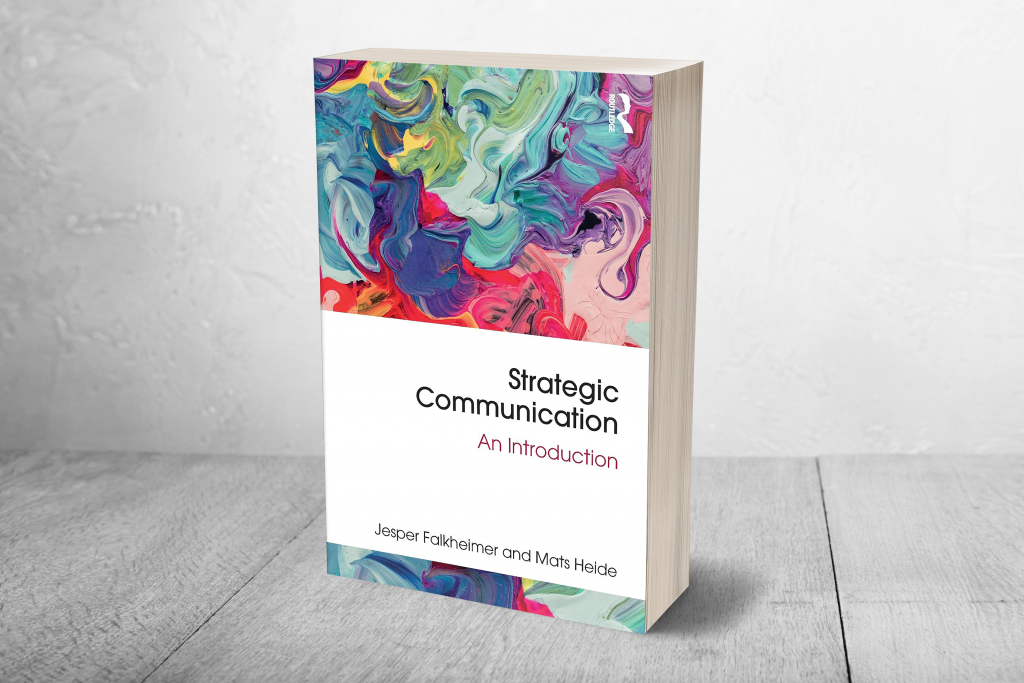Review: Strategic Communication: An Introduction

About the author
Kevin is a co-founder of PR Academy and editor/co-author of Exploring Internal Communication published by Routledge. Kevin leads the CIPR Internal Communication Diploma course. PhD, MBA, BA Hons, PGCE, FCIPR, CMgr, MCMI.

Strategic Communication: An introduction
by Jesper Falkheimer and Mats Heide
2018, Routledge
This new book by Swedish academics Jesper Falkheimer and Mats Heide aims to provide undergraduate students with an overview of theories, concepts and methods in strategic communication.
It is an admirable text that brings together theories from a number of fields. Indeed, the book is a veritable smorgasbord of interesting and relevant concepts. It rattles through them at a rapid rate, all within broad reflective, critical and holistic perspectives.
Woven throughout the exploration of concepts is an underlying argument that ‘communication is organisation’ where basic approaches to planning and practice are not fit for purpose in a complex environment.
One strength of this book is the range of concepts covered. These include agenda setting, framing, auto-communication, cognitive isomorphism, normative isomorphism, rhetoric, transmission, co-creation, rational managerialism, situational crisis communication theory, complexity theory and requisite variety.
If this already sounds like theory overload, then the authors argue that there are actually too few theories in the field.
The authors also tackle theory from an integrated communication perspective, bringing together marketing communication, organisational communication and public relations. This gives the book a broader outlook than other texts that focus more exclusively on public relations. It also gives internal communication equal weight, a glaring omission from some textbooks.
Another strong aspect of the book is a dedicated section on change and crisis communication where the linkage to complexity and uncertainty provides a compelling case for focusing more on employees.
The sections on strategy and strategic communication pose some challenging questions. The authors go as far as to suggest that ‘fancy strategy success stories told at various conferences’ may simply be ‘retrospective rationalisations of activities that just happened that are unrelated to strategies’. A laudable call is made for researchers to pay more attention to ‘communication professionals’ practices, based on the processual perspective of strategy – that is, what practitioners do when they act as communication professionals in organisations.
Although this book is strong on the discussion of a broad range of theories and concepts it is less detailed on how they can be applied to practice. Some useful examples are provided. More would have helped students to understand the practical ways that theory informs practice (and vice versa).
The sections on mediatization and future developments highlight some topical points about digitalisation, fake news and sources. More analysis of the ways that digitalisation is affecting theory and practice could have been added here. For example, some consideration of the potential impact of AI would have extended the discussion about transmission and ritual that was central to an earlier chapter on ‘what is communication?’
An underlying theme throughout the book is the need to go beyond a simplistic understanding of communication.
This is a point that is very well made. Whether it is about adapting messages to different stakeholder groups, the importance of long-term goals, the limitations of linear models, functional stupidity (a lack of reflexivity and a refusal to use intellectual capacity in an organisation) or the need to embrace complexity, the book challenges readers to think differently.
This approach is a key point of difference with the better known ‘Corporate Communication: A Guide to Theory and Practice’ by Joep Cornelissen. For this reason alone, it is a recommended read for undergraduate students and practitioners who are interested in developing their knowledge of communication strategy beyond some of the standard descriptions of theory and practice.